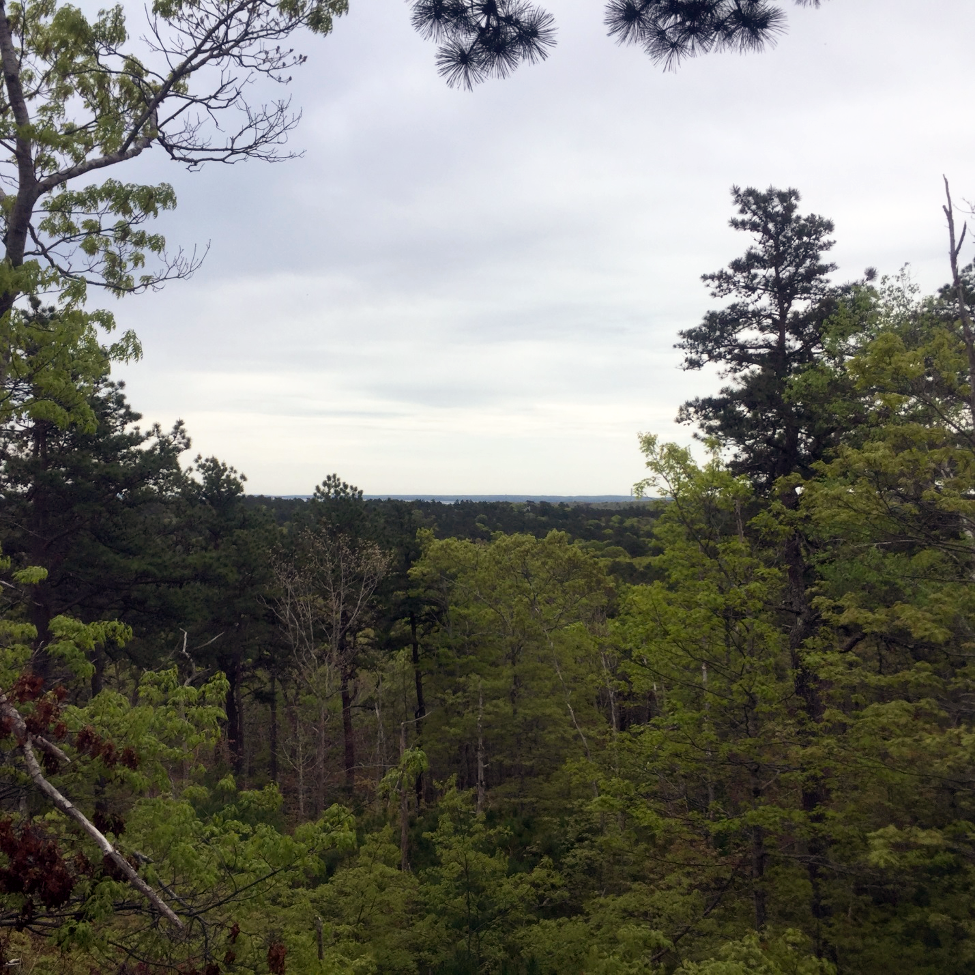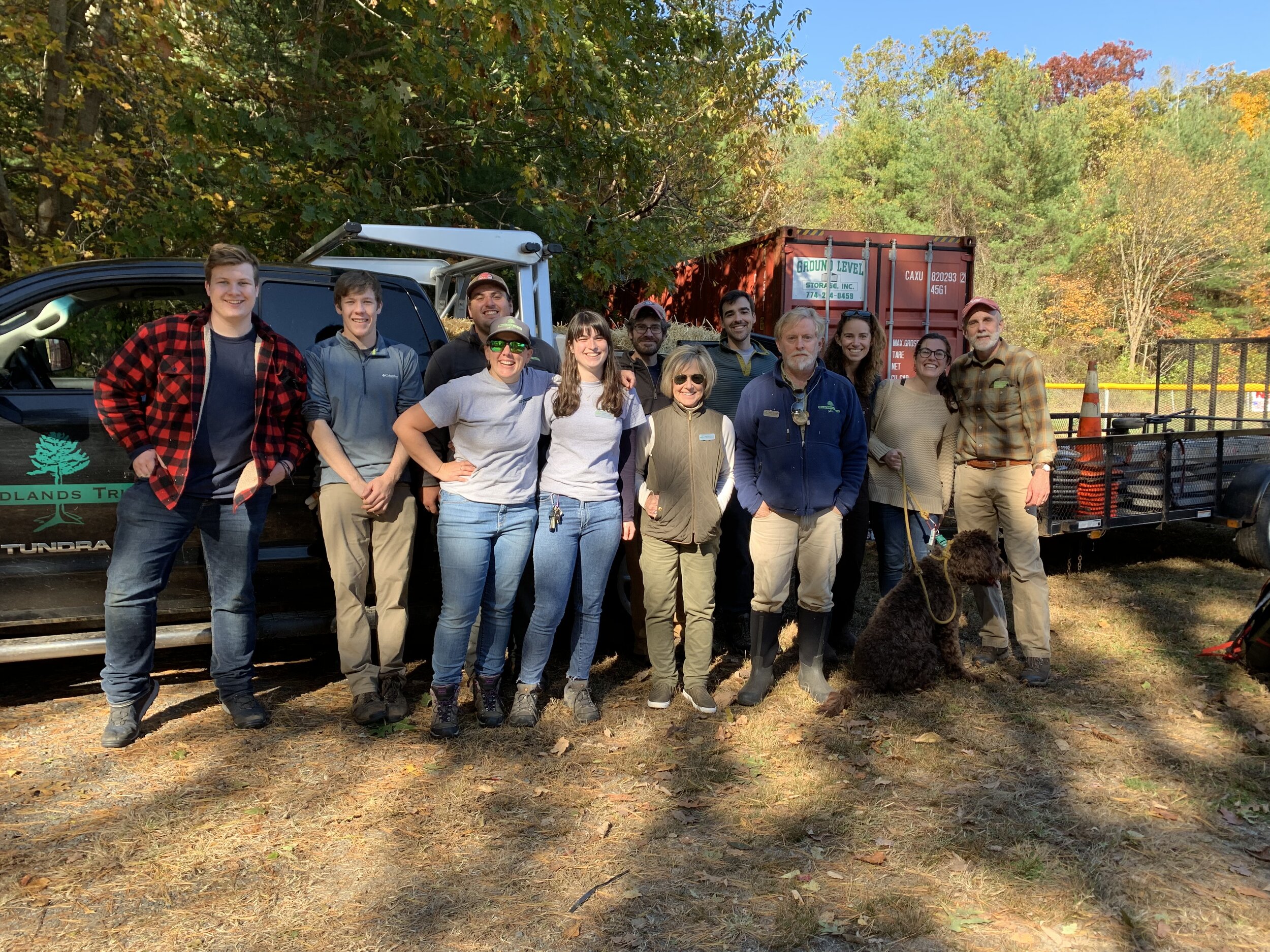The CR also helps protect land along an important headwaters area in the Taunton River watershed. The Moore property has 300 feet of frontage on the Salisbury Plain River, just above its confluence with Beaver Brook. It is at this confluence where the Matfield River begins its journey toward eventually converging with the Town River. The Matfield and the Town combine to create the Taunton River, a long-treasured regional resource and since 2009 a National Wild and Scenic River.
The potential vernal pool is also of considerable interest. The Commonwealth’s Natural Heritage Program, the agency charged with documenting and protecting our rare species and natural communities, notes that “vernal pools constitute a unique and increasingly vulnerable type of wetland. Vernal pools are inhabited by many species of wildlife, some of which are totally dependent on vernal pools for their survival”. Given that reality, protecting these remaining pools has never been more urgent. Several rare species, including blue-spotted salamander, are dependent on vernal pools for successful breeding.
The Moore CR is our first completed project of any kind in East Bridgewater, and the very first CR ever completed in the town by any entity. We extend our sincere gratitude to Frank and Rosemary Moore for electing to work with us to ensure the preservation of their cherished family homestead.
October: Gifford Bog Community Preservation Act Conservation Restriction, Duxbury
The 149-acre Gifford Bog CR helps protect a sizable assemblage of town-owned open space in northeast Duxbury that includes the Wright Reservoir, scenic views, a network of hiking trails and the town’s oldest known active cranberry bog, the 21-acre namesake bog. The Gifford Bog complex also helps to protect Duxbury’s drinking water supply, as it falls within a Commonwealth of Massachusetts identified Zone II “Wellhead Protection Area” and the town’s “Aquifer Overlay Protection District”.
The land now protected by the Gifford Bog CR is part of a larger initiative by the town of Duxbury to acquire and preserve three distinct landscape assemblages formerly owned by the Merry family and possessing similar characteristics, including cranberry bogs.
The town has prioritized acquiring and preserving properties that include cranberry bogs, in part to ensure that these iconic symbols of the region’s agricultural heritage remain in active operation. Unfortunately, the Massachusetts cranberry industry is experiencing significant difficulties for a variety of reasons, and numerous bogs are no longer producing and are likely forever lost. Duxbury’s acquisition of the Gifford Bog complex and other bog complexes is a proactive strike against the current trend of decline in the region’s cranberry industry.
Congratulations to Duxbury Conservation Agent Joe Grady, Open Space committee member Pat Loring, and all their Duxbury colleagues for their outstanding work in preserving another vital component of Duxbury’s ecological and agricultural heritage.
November: Sylvester Field Woodlot Acquisition, Hanover
Last spring, Wildlands began work on the Sylvester Field Preservation Project, inclusive of four parcels: three contiguous parcels in Hanover’s historic Four Corners neighborhood with frontage on Third Herring Brook, and one in Norwell with frontage on the nearby North River. Collectively, the subject parcels compose 25 acres.
Just prior to Thanksgiving, thanks to the generosity and fervent support of a private donor, we achieved preservation outcomes for two of the three Hanover parcels by acquiring the 7-acre woodlot and a deed restriction on the adjacent 2.75-acre homestead parcel that includes a c.1854 home. We will steward the woodlot as one of our “Forever Wild” preserves, a designation we afford to properties with significant ecological values but possessed of access limitations and/or sensitive wetland resources. The homestead parcel will continue to be privately owned, but is now protected against further subdivision or unwarranted demolition.
The acquisitions of the woodlot and homestead parcel deed restriction represent the first two components of the larger Sylvester Field Preservation Project. The third and fourth components of the project are, respectively, the historic 10-acre Sylvester Field, one of Hanover’s most iconic landscapes, and the 5-acre Norwell parcel along the North River. We will have much more to report on this project as we move into 2021—watch this space!
December: Wolfe Conservation Restriction, Marshfield
For our last completed project of the year, the Wolfe family realized a long-held ambition by donating a CR on their 25-acre family homestead along the North River in Marshfield. The CR protects land with 740 feet of frontage along the river, 15 acres of saltmarsh, commanding views of a sizable stretch of river corridor, and areas identified by the Commonwealth’s Natural Heritage and Endangered Species Program as significant wildlife habitat, including Bio Map 2 Core Habitat. Areas designated as Core Habitat are critical for the long-term survival of numerous rare wildlife species and the natural communities they live within, and are thus priorities for preservation.
The immediate landscape context of the Wolfe property is highly favorable as it directly connects with two protected properties, the town of Marshfield’s 26-acre Messer Preserve and the Trustees of Reservations 68-acre Two Mile Preserve.


















